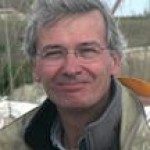Link to Pubmed [PMID] – 24528864
Cell Host Microbe 2014 Feb;15(2):177-89
Numerous pathogenic Gram-negative bacteria use a type three secretion apparatus (T3SA) to translocate effector proteins into host cells. Detecting and monitoring the T3SA of intracellular bacteria within intact host cells has been challenging. Taking advantage of the tight coupling between T3S effector-gene transcription and T3SA activity in Shigella flexneri, together with a fast-maturing green fluorescent protein, we developed reporters to monitor T3SA activity in real time. These reporters reveal a dynamic temporal regulation of the T3SA during the course of infection. T3SA is activated initially during bacterial entry and downregulated subsequently when bacteria gain access to the host cell cytoplasm, allowing replenishment of the bacterial stores of T3S substrates necessary for invading neighboring cells. Reactivation of the T3SA was strictly dependent on actin-based motility and formation of plasma membrane protrusions during cell-to-cell spread. Thus, the T3SA is subject to a tight on/off regulation within the bacterial intracellular niche.

